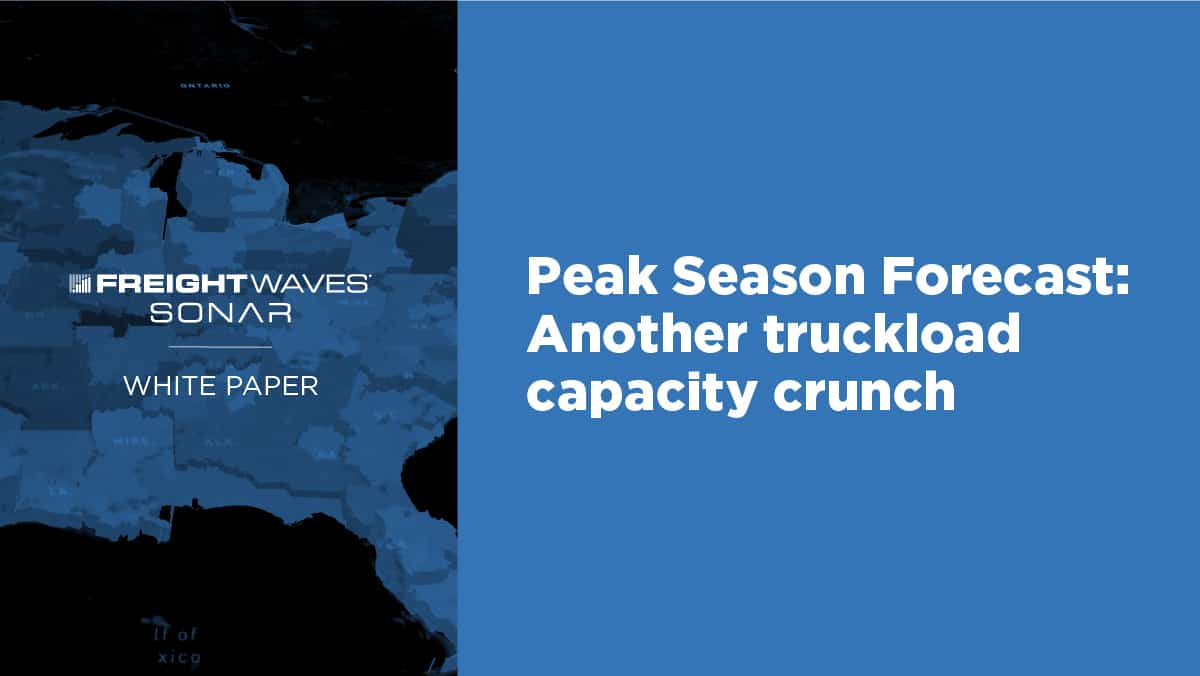In this report, we discuss our outlook for the fall peak season for rail intermodal (p. 2-5), maritime (p. 5-8) and truckload (p. 8-11).
Intermodal volume typically peaks in October and subsequently declines in November and December. That seems unlikely this year in light of the robust demand and the potential for some actions taken by the railroads (such as reopening terminals) and intermodal companies (such as adding containers) to partially alleviate congestion and equipment shortages. Therefore, the intermodal volume trajectory in the fourth quarter may more closely resemble 2020 (rising in November and December) rather than 2018-2019 (declining in November and December from October levels). Another peak season in which intermodal demand exceeds supply would likely presage further contract rate increases in 2022. The biggest risk to that intermodal volume outlook is that shippers could get even more fed up with intermodal service levels and move more freight on the highway to get imported consumer goods to stores in time for holiday shopping. Also, a blizzard in Chicago would not enhance intermodal network efficiency.
The maritime industry has been in peak season mode since the middle of last year and import volumes have been consistently higher year-over-year. Goods for the holiday shopping season are largely already stateside, which has led to a decline in our forward-looking ocean bookings data. But, low retail inventory levels are likely to keep import volumes elevated as shippers seek to accelerate early 2022 imports to avoid any disruption associated with Chinese New Year. A risk to that outlook is the potential for the Asian energy crisis to disrupt manufacturing capacity.
The truckload peak season starts later than the other modes and the recent decline in demand (from a very high level) at the beginning of the fourth quarter is seasonally typical. While declining tender rejection rates might seem encouraging to shippers, that is largely due to contract rates that were renegotiated sharply higher and the explosion in the spot market (both volume and rates). Both factors highlight the very tight capacity environment heading into peak season, which will likely get even tighter during the next two months. As retailers stock shelves, shippers that experience carrier compliance issues will likely have to pay exorbitant spot rates, which are already ~20% higher than year-ago levels. The still-constrained intermodal networks could force some time-sensitive loads to the highway. A risk to that outlook is that the supply chain-related goods shortages lead to a surge in the giving of gift cards in place of tangible goods.
Members Only
You have selected content that's only available to members of FreightWaves Passport. As a member, you gain immediate access to the most in-depth and informative freight research available. It's your gateway to continuing education.
Members also get:
- Access to exclusive community dedicated to discussing the most important challenges facing freight.
- Monthly and Quarterly Freight Market reports keeping you informed of industry trends.
- Much, much more!
Click below to learn more and sign up today!
Subscribe
Existing Passport subscribers may log in using the form below.
